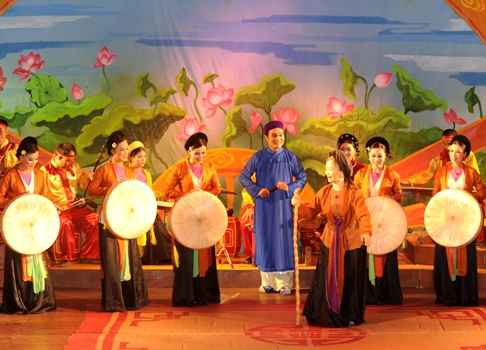"Cheo" is a traditional form as well as a typical representative of Vietnamese opera beside "Tuong" and "Cai Luong". "Cheo" is a form of art performance that is very popular in the North of Vietnam, especially provinces of the Red River Delta.
“Cheo” originated in Hoa Lu ancient capital (Ninh Binh Province now) under Dinh Dynastry (around 10th century). Till 15th century, King Le Thanh Tong allowed “cheo” performance in the royal palace. That form of art performance had rapidly developed and flourished in 19th century. There are many famous “cheo” plays which made deeply impression to several generations of audiences like “Quan Am Thi Kinh”, “Luu Binh - Duong Le”, “Truong Vien”, “Kim Nham”, etc.
Since 20th century, scripts of “cheo” plays have been modernized with the content about contemporary life.“Cheo” is wonderful combination of dance and singing in the form of music theatre. The actors and actresses will use both dance and singing to tell the story of the play. They have different costumes, make-up, langue and behaviors which are typical for different characters.


However, all characters are familiar with the real life in order to present a picture of real life on stage.To assist the actors and actresses, an orchestra will sit under the stage and play traditional instruments for the beat along the play. There are many instruments used such as “dan nguyet”, “dan nhi”, drums, “dan tam thap luc”, flutes, etc.Differ from other kinds of music theatre in Vietnam, “cheo” rooted in ordinary daily life of Vietnamese peasants in the Red River Delta. Thus, “cheo” reflects the authentic values of Vietnamese people’s lives: cultivation, traditional festivals, love, relationship between family’s members, etc. “Cheo” is usually performed on special occasions of Lunar New Year, traditional festivals and while the harvests ended. It has become an essential part of communal events as well as Vietnamese culture.

.jpg)




.jpg)



Không có nhận xét nào:
Đăng nhận xét